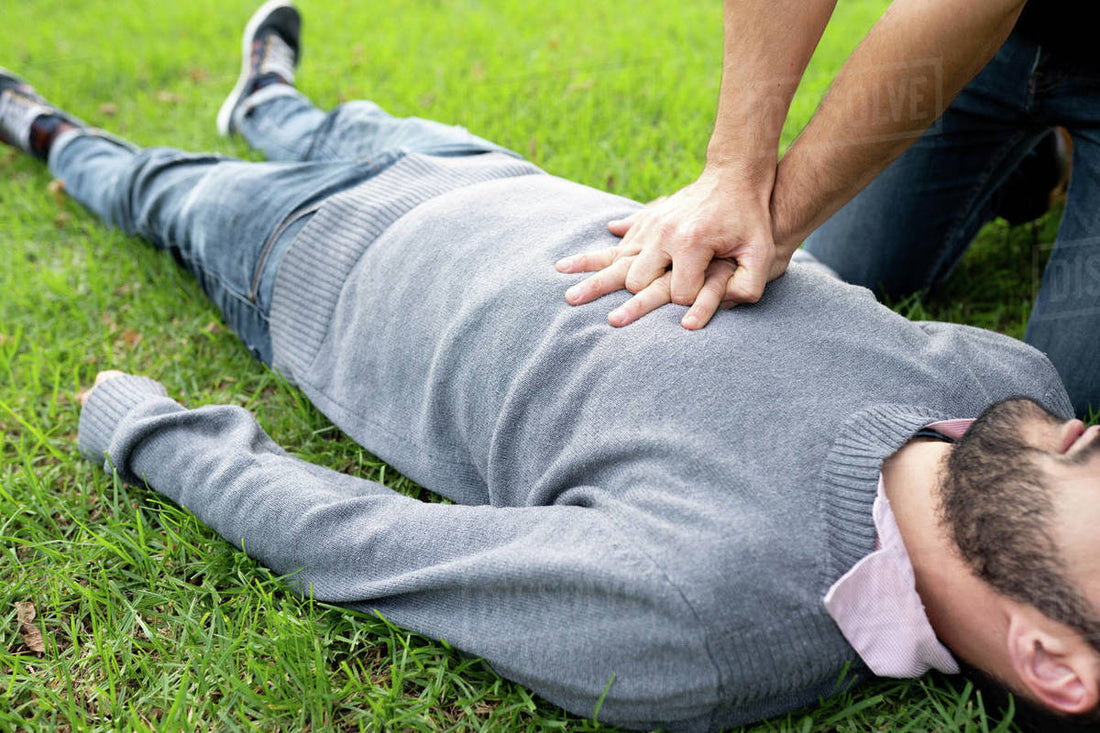
Cardiopulmonary resuscitation (CPR)¹ is a lifesaving technique that can be performed by anyone in the event of cardiac arrest. It involves a combination of chest compressions and rescue breaths to maintain blood circulation and deliver oxygen to the lungs. Understanding the role of chest compressions and rescue breaths is crucial in performing effective CPR chest compressions?
Chest compressions are a vital component of CPR. They involve applying pressure to the chest, specifically the lower half of the sternum, to manually pump the heart and circulate blood throughout the body. The goal is to mimic the pumping action of the heart and maintain blood flow to vital organs.
How do chest compressions work?
During cardiac arrest, the heart stops beating effectively, and blood flow to the brain and other organs is compromised. Chest compressions help to overcome this by manually compressing the heart between the sternum and the spine. This compression forces blood out of the heart and into the major blood vessels, supplying oxygen and nutrients to the body's tissues.
What are rescue breaths?
Rescue breaths, also known as artificial ventilation², are another crucial aspect of CPR. They involve delivering breaths of air into the lungs of the person in cardiac arrest. The purpose of rescue breaths is to provide oxygen to the lungs, which can then be absorbed into the bloodstream and delivered to the body's cells.
How do rescue breaths work?
During CPR, rescue breaths are performed by tilting the person's head back, lifting the chin, and creating a seal over their mouth or nose. The rescuer then delivers a breath of air into the person's lungs, causing the chest to rise. This process delivers oxygen to the lungs, which is then transported to the rest of the body through the bloodstream.
Why are chest compressions and rescue breaths important?
The combination of chest compressions and rescue breaths is vital in CPR because it helps to maintain blood circulation and deliver oxygen to the body's organs. Chest compressions ensure that blood is continuously pumped throughout the body, preventing organ damage due to lack of oxygen. Rescue breaths provide the necessary oxygen to the lungs, allowing the body to function until advanced medical help arrives.
How effective are chest compressions and rescue breaths?
Studies have shown that performing chest compressions and rescue breaths in the correct ratio can significantly improve the chances of survival for a person in cardiac arrest. The American Heart Association³ recommends a compression-to-ventilation ratio of 30:2 for adults, meaning 30 chest compressions followed by 2 rescue breaths. This ratio helps to maintain adequate blood circulation and oxygenation.
In conclusion, chest compressions and rescue breaths are integral components of CPR. Chest compressions help to circulate blood throughout the body, while rescue breaths deliver oxygen to the lungs. By understanding the importance of these techniques and performing them correctly, anyone can potentially save a life in the event of cardiac arrest. For further learning, watch St John Ambulance's fantastic video on how to properly and effectively perform CPR on an adult below.
References:
2. artificial respiration | Britannica
3. The American Heart Association
4. How to do CPR on an Adult - First Aid Training - St John Ambulance (video)

